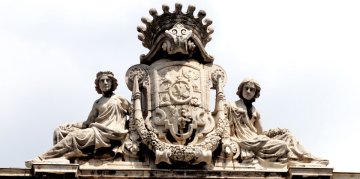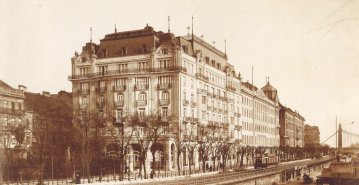
Dubniczky Zsolt
Cikkek
Lion, sparrowhawk, crane – Ancient symbols from coats of arms tell the story of the past of noble families in the Magnates' Quarter
June 17, 2021 at 9:30 AM
Although in 1947, the communist regime banned the use of noble forenames and badges, including private coats of arms, fortunately, these were not removed from the former aristocratic palaces. Ancient symbols, often dating back centuries, referred to the owner's family, their role in Hungarian history and also served aesthetic purposes on the buildings. In the second half of the 19th century, the Hungarian aristocracy enjoyed building around the National Museum, so several buildings with family coats of arms and their motifs can be found in the quarter. These can be seen in the palaces of the Festetics and Károlyi families in Pollack Mihály Square.
The famous line of hotels on the Danube Promenade started to develop in the year of the millennium
May 5, 2021 at 9:00 AM
Several hostels and inns awaited local and foreign guests on the banks of the Danube in Pest during the Reform period. What would become the Danube Promenade south of Chain Bridge, was a stronghold of hospitality. Most of the houses constructed in the 1870s were not originally built as hotels, and it was not until the millennium that these developments began in the area. Upscale luxury hotels such as the Grand Hotel Hungária and Bristol awaited guests at the end of the 19th century and from the 1910s, the Ritz.


